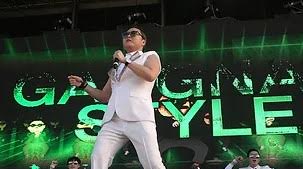About Lesson
Lesson 8: Korean Popular Culture in the United States

Psy performs “Ganfnam Style” in Sydney in 2013.
(Source: Wikipedia)
Lesson Features
-
- TOPICS: Korean popular culture, K-pop, Parasite, Minari
- HISTORICAL TIMEFRAME: 1990 – Present
- SUMMATIVE ASSESSMENT: Biographical Research Presentation, Memoir Essay
Lesson Overview
-
- Students explore Korean popular culture in the United States, including K-Pop, Korean and Korean American films, food, and more. They compare and contrast K-POP and American Popular music, conduct short research on an example of Hallyu, analyze films, conduct research for a biographical presentation of a notable Korean American, and compose a memoir essay of their own experiences.
Timeframe
-
- There are three activities in this lesson. Each activity requires approximately 55 minutes and includes homework.
- The Summative Assessment Memoir essay require approximately 55 minutes to introduce, with additional time for development and review of drafts and sharing final products.
Objectives and Learning Goals
-
- Students will be able to identify causes and effects of how K-Pop has become a global phenomenon and expectations for future growth.
- Students will be able to identify examples and impacts of Korean popular culture on the United States.
- Students will be able to analyze movies by Korean and Korean Americans for their relevance to U.S. society and culture.
1 This lesson was adapted from the lesson Korean Popular Culture in the United States, by Ms. Helen Kang, Teacher at North Hollywood High School, Los Angeles Unified School District. Supplemental activities were developed by Dr. Fay Shin, Chair and Professor in the Department of Teacher Education at California State University, Long Beach. Vocabulary
-
- Autobiography – an account of a person’s life written by that person.
- Bibimbap – a Korean dish consisting of rice topped with sautéed vegetables, chili paste, and beef or other meat, sometimes with the addition of a raw or fried egg.
- Biography – an account of someone’s life written by someone else.
- Genre – a category of artistic composition, as in music or literature, characterized by similarities in form, style, or subject matter.
- Hallyu/The Korean Wave – a Chinese term which, when translated, literally means “Korean Wave”. It is a collective term used to refer to the phenomenal growth of Korean culture.
- K-pop – Korean popular music, a popular genre of music originating from South Korea. K- pop songs contain many musical influences, such as hip-hop, electronic dance, jazz, and rock, performed by groups featuring anywhere from four to 21 members.
- Maeuntang – This spicy fish stew is a hot spicy Korean cuisine fish soup boiled with gochujang and various vegetables
- Memoir – a historical account or biography written from personal knowledge or special sources.
- Minari – plant native to East Asia and found in a lot of South Korean cooking.
- Popular culture – culture based on the tastes of ordinary people rather than an educated elite.
- Popular music – music appealing to the popular taste, including rock and pop and also soul, country, reggae, rap, and dance music.
Original Resource
-
- Kang, H & Shin, F. (2022). Korean Americans in the 21st Century. In G. Cho & V. Costa (Eds.). Korean American Ethnic Studies Curriculum: Teaching Resource Materials for K-12 Classrooms (pp.383-449). Consulate General of the Republic of Korea in Los Angeles.
Lesson 8 Presentation (PDF)
Lesson 8 Presentation Teacher’s Guide (PDF)
Download Lesson 8 Presentation (PPT)

